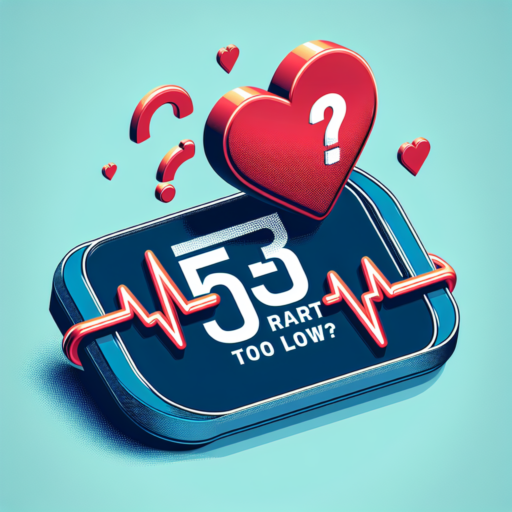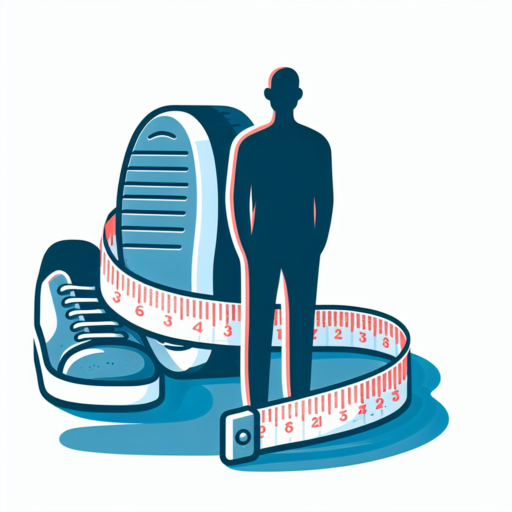Is a resting heart rate of 53 good?
Understanding your resting heart rate (RHR) is crucial in gauging your overall cardiovascular health. Typically, a lower RHR signifies more efficient heart function and better cardiovascular fitness. A resting heart rate of 53 beats per minute falls into what is considered a healthy range for adults. This rate suggests that the heart muscle is in good condition, pumping an adequate volume of blood with each beat to supply the body’s needs without overexerting.
It’s important to note that the normal range for a resting heart rate is commonly said to be between 60 and 100 beats per minute for adults. However, athletes and individuals who are highly fit may often have a resting heart rate lower than 60 BPM, sometimes reaching as low as into the 40s. This is largely because regular, rigorous exercise strengthens the heart muscle, enabling it to pump a higher volume of blood with each beat more efficiently. Thus, a resting heart rate of 53, particularly in the context of someone who engages in consistent physical training, can indeed be considered a sign of good health and fitness level.
Despite the general positive implications of a 53 BPM resting heart rate, it’s essential to consider individual factors like age, medication, and health conditions that could influence heart rate. If your resting heart rate suddenly drops to 53 BPM without obvious reasons such as increased physical activity or fitness, it may be worth consulting with a healthcare professional to ensure it’s not indicative of an underlying health issue.
No se han encontrado productos.
What is a dangerously low heart rate?
A dangerously low heart rate, medically known as bradycardia, occurs when an individual’s heart rate falls significantly below the normal resting rate. Generally, for adults, a heart rate fewer than 60 beats per minute (BPM) while at rest is considered bradycardic. However, it’s crucial to note that what’s deemed dangerously low can vary based on an individual’s physical condition and age.
Bradycardia can manifest through a variety of symptoms, including fatigue, dizziness, weakness, fainting, or shortness of breath. These symptoms occur because the heart is unable to pump an adequate amount of oxygen-rich blood throughout the body. In severe cases, a dangerously low heart rate can lead to serious health complications, including heart failure, low blood pressure, or cardiac arrest.
It’s important to understand that not all low heart rates signify a health problem. For instance, well-trained athletes often have a resting heart rate below 60 BPM due to their high cardiovascular efficiency. Nevertheless, if you experience symptoms of bradycardia or have concerns about your heart rate, consulting with a healthcare professional is advisable to rule out underlying conditions or to receive necessary treatments.
Is a resting heart rate of 55 concerning?
Understanding your resting heart rate (RHR) is vital to monitoring your cardiovascular health. Generally, a resting heart rate of 55 beats per minute can fall into the category of bradycardia, which is a slower than normal heart rate. However, it’s crucial to consider the physical fitness of the individual before jumping to conclusions.
For athletes or individuals who engage in high levels of physical activity, a resting heart rate of 55 can be quite normal. In fact, it’s often a sign of good heart efficiency and cardiovascular fitness. These individuals have hearts that can pump a greater volume of blood with each beat, requiring fewer beats per minute to maintain a steady circulation.
On the other hand, if a sedentary individual experiences a sudden drop to a resting heart rate of 55, it may merit attention. Other factors, such as medications, underlying conditions, or even dehydration, can influence heart rate. Therefore, it’s advisable to monitor any associated symptoms like dizziness, fatigue, or shortness of breath and consult a healthcare professional for a personalized assessment.
At what heart rate should you go to the hospital?
Knowing when a high heart rate requires medical attention is crucial for your health and wellbeing. If your heart rate significantly exceeds 100 beats per minute (bpm) while at rest, it’s often considered high (tachycardia). However, the decision to seek emergency care shouldn’t be based solely on numbers. Several factors, including symptoms and personal health background, play a critical role.
Indicators that Require Immediate Attention
- Chest pain or discomfort, which could be indicative of a heart attack.
- Difficulty breathing, a sign of possible heart problems or a lung condition.
- Feeling faint or actual fainting, suggesting that your brain isn’t getting enough blood due to a low heart rate or other conditions.
- Sudden dizziness or lightheadedness, which can signal an abnormal heart rhythm or other issues.
While an elevated heart rate can be concerning, it’s important to consider how you feel overall. Symptoms such as severe shortness of breath, ongoing dizziness, or losing consciousness are clear indicators that you should go to the hospital. In contrast, a slightly elevated heart rate with no other symptoms, especially after caffeine consumption, physical activity, or stress, might not require emergency medical attention.




